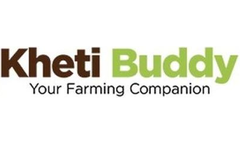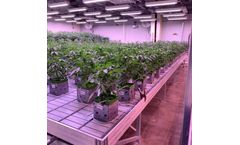Refine by
Horticulture Crop Articles & Analysis
11 articles found
One exemplary case of digital transformation is Shree Agro Group’s adoption of KhetiBuddy’s Farmer Engagement and Management Solution. This initiative not only propelled their sales but also strengthened their relationships with farmers and dealers, setting a new benchmark in agricultural ...
How do you achieve the highest yields with your lighting system? As we know, increasing light intensity up to a certain species-specific point, results in a corresponding increase in yield. And when light levels are not optimized for production, or the type of crop you are growing, you are going to have slower flowering, poor root development and plant structure, as well as reduced yields. There ...
Whether you’re a grower wanting to extend your season in the hoop house or greenhouse, an urban rooftop farm, or a small indoor start-up—horticultural lighting gives you the flexibility and assurance that you will be growing the highest quality products year-round. With demand for local grown produce increasing, it’s not surprising to see many small growers expand into ...
What is the difference between Red/Blue vs. Broad “Full” Spectrum LEDs? Growers generally have two options when it comes to horticultural LED spectrums – “full spectrum” or “broad-spectrum”, which appears as white light; and “red/blue spectrum”, which can appear as purple or pink light. The red/blue spectrum LED luminaires are often referred ...
Getting the right amount of moisture to each paddock on your property to ensure grass grows well and property doesn’t scour or erode from uncontrolled water runoff is the holy grail of New Zealand farmers. Unfortunately, many assume that their irrigation company will get this sorted for them and expect that when they part out significant investments in large irrigation systems, that at ...
Recent trends in actual trade confirm model predictions that liberalization of water allocation would switch water from field crops to horticulture and promote growth in non-agricultural exports. ...
Horticulture is a labour intensive sector that is important for human wellbeing: 'agriculture supplies protein, carbohydrates and staple crops - but we would have a pretty boring life without horticulture.' Nevertheless, in many countries, faculties of agriculture and their departments of horticulture have been swallowed by ...
The present paper focuses on addressing uncertainty in the process of land suitability evaluation for horticultural projects area (mountains area in Syria). In this context, both fuzzy AHP and TOPSIS methods are applicable in determining agricultural land-use priorities and can be used in the planning process. ...
This study provides an overview of the postharvest loss situation of selected vegetable crops as perceived by the various supply chain actors in Vietnam, Cambodia and Laos. ...
ReMaDe Kent and Medway is managing a series of WRAP (the Waste & Resources Action Programme) funded trials on top fruit and other horticultural crops in Kent, the ‘Garden of England’, in order to develop the market for compost as a soil improver, and in this trial, as a mulch for young fruit trees. Twelve farms are taking part in the trials growing a wide ...
Farmers face challenges in utilising technologies for producing high quality crops; meaningful manipulation of light, nutrients, water and plants is possible only when plant responses to environmental conditions are understood. Genetic engineering can produce plants with desirable characteristics, but society is not yet convinced that benefits gained outweigh risks. Protected ...








